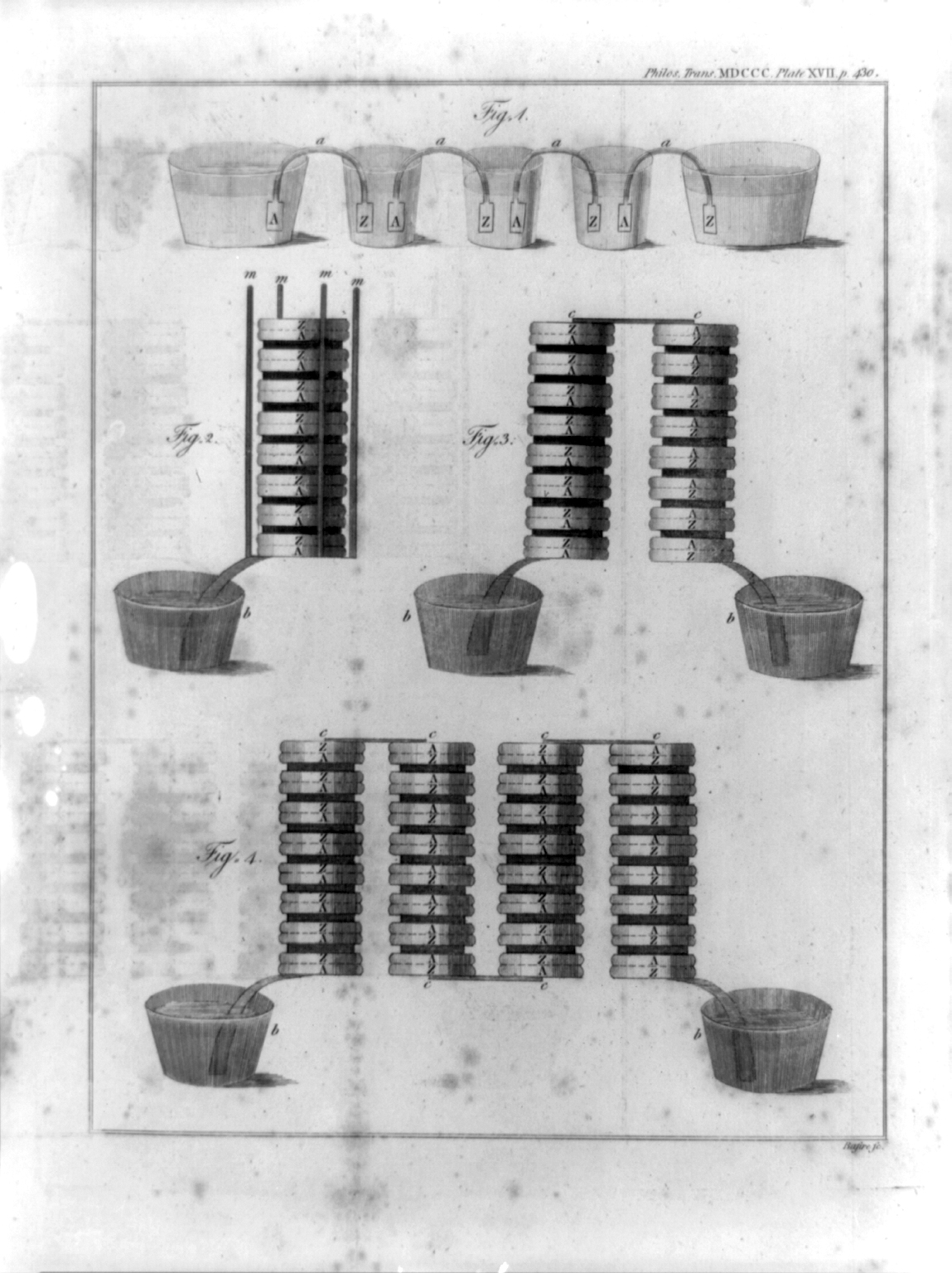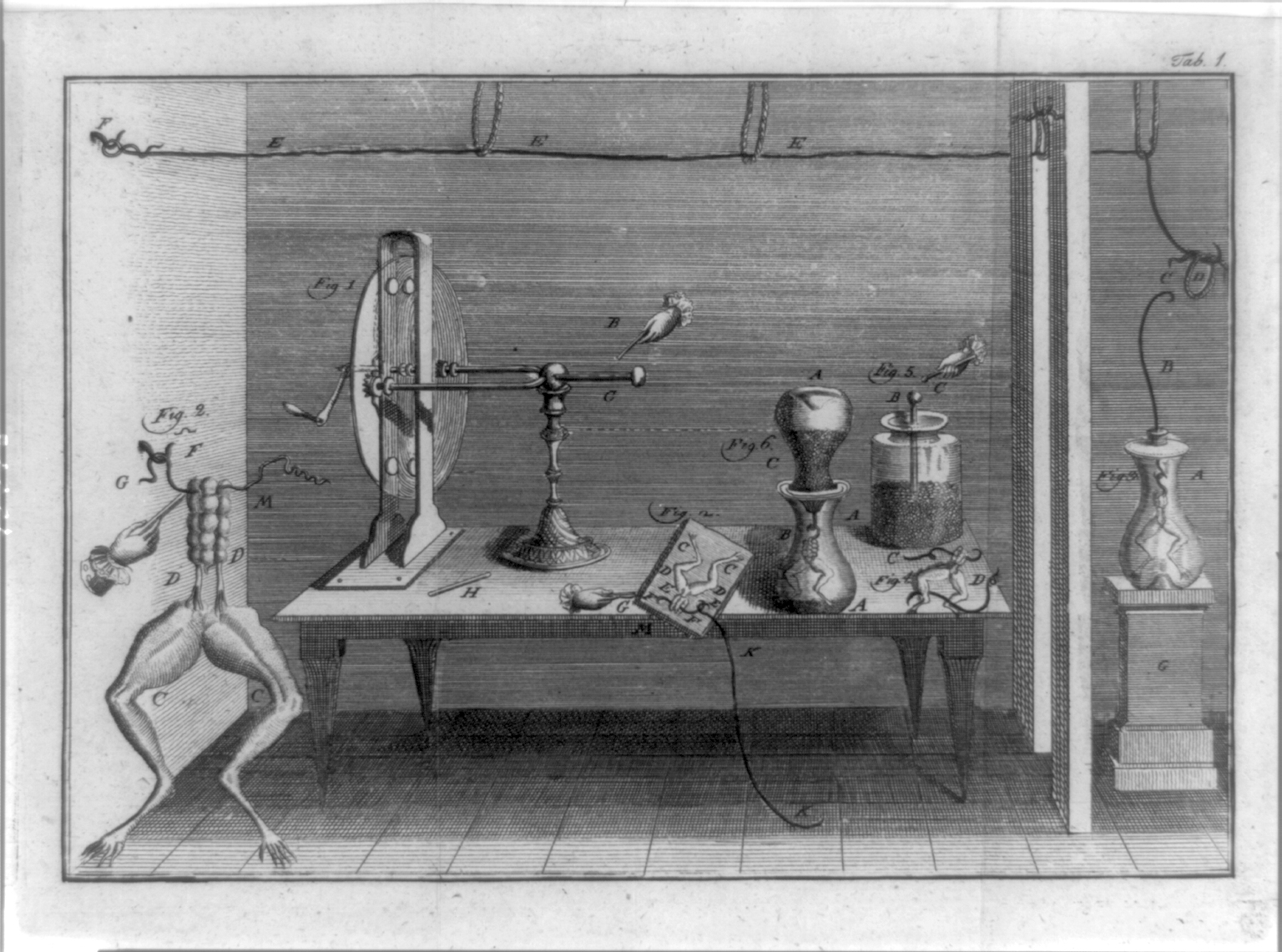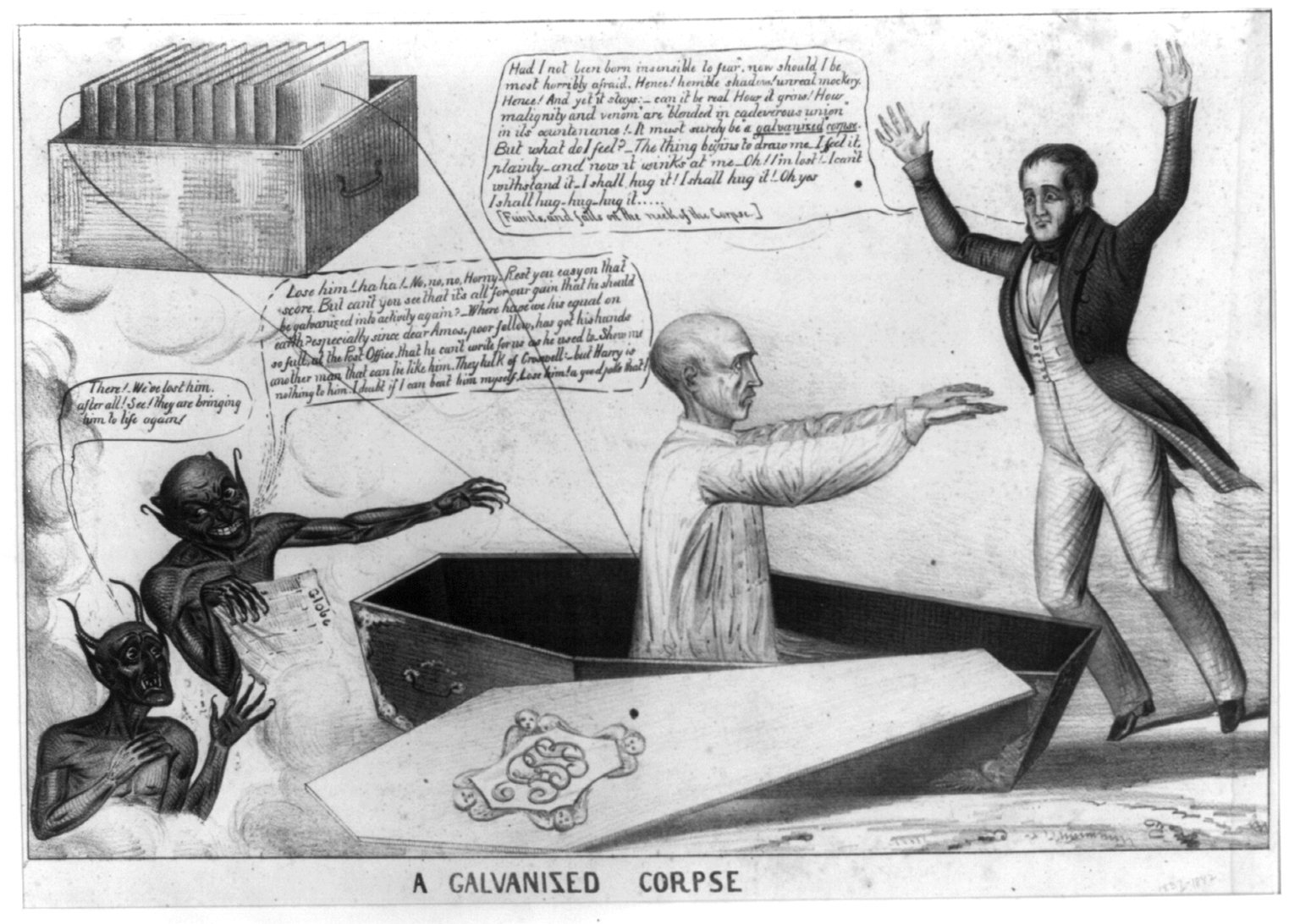right to the source
“Inspired by True Events”
“A galvanized corpse” is a lithograph available free online from the Library of Congress at: www.loc.gov/item/2008661296. The Library’s collections also include several scientific illustrations related to content of this article. The engraving “Legs of dissected frogs, and various metallic apparatus used to measure what was thought to be electricity flowing in animals” is available at: www.loc.gov/item/92518867. Meanwhile, another engraving, “the first battery, which was made of alternating metal layers and saline-soaked leather pads, and proved electricity is caused by contact with dissimilar metals,” may be found at: www.loc.gov/item/92518975.
In the late 1700s, an Italian scientist named Luigi Galvani made a startling discovery while experimenting with dissected frogs. Galvani found that when he touched two types of metals—such as a brass hook and an iron scalpel—to a frog’s legs, they began to twitch. From this, Galvani theorized that a thing called “animal electricity” existed intrinsically within biological tissues. Galvani’s contemporary Alessandro Volta disputed this conclusion. After conducting his own experiments, Volta argued that it was simply the juxtaposition of different metals that created an electric current; this “metallic energy” had caused the legs to twitch. Volta’s experiments would subsequently lead him to invent the voltaic pile or battery.
Still, Galvani’s concept of “animal electricity” had captured the public’s imagination. Before long, others would stage public experiments in which electricity would be run through the corpses of twitching animals or executed criminals, and some even believed it might be possible to reanimate, or galvanize, a corpse. Mary Shelley was aware of these experiments and cited them as inspiration in writing her famous 1818 novel, Frankenstein.
Decades after Galvani’s discovery, Henry R. Robinson, an American lithographer and publisher, published the political cartoon featured here. The cartoon features Francis Preston Blair, who served as editor of The Washington Globe newspaper for 15 years and publisher of The Congressional Globe. He became an influential political figure during the Jacksonian era, and served as unofficial adviser to presidents Andrew Jackson and Martin Van Buren. The fact that Robinson referenced Galvani in his cartoon may be of interest to students as an example of how scientific ideas can find their way into public discourse in imaginative ways, providing insights into how such ideas are perceived and perpetuated.


Show Robinson’s cartoon to students and ask them to make observations and ask questions. While many will be drawn to horrific images, such as the corpse rising from its casket, others may notice details that lead to questions related to science and technology, such as what looks to be a rudimentary battery attached to the corpse. Challenging students to reflect on and research these details can unlock insights into how scientific ideas were perceived at the time. The cartoon, though political in nature, was informed by real scientific experiments performed in the late 1700s, when electricity was a relatively new phenomenon people were still trying to understand.
What current scientific ideas do your students see talked about today, and how are they perceived in the public’s imagination? Are common perceptions in any way similar to thoughts surrounding electricity, as presented in the featured cartoon, in the 1800s?
Related Student Exploration
- Electricity
- Scientific illustrations
- Frankenstein
- Luigi Galvani, Alessandro Volta, and Henry R. Robinson
Michael Apfeldorf (mapf@loc.gov) is an educational resources specialist at the Library of Congress.
Literacy Phenomena Physical Science High School



